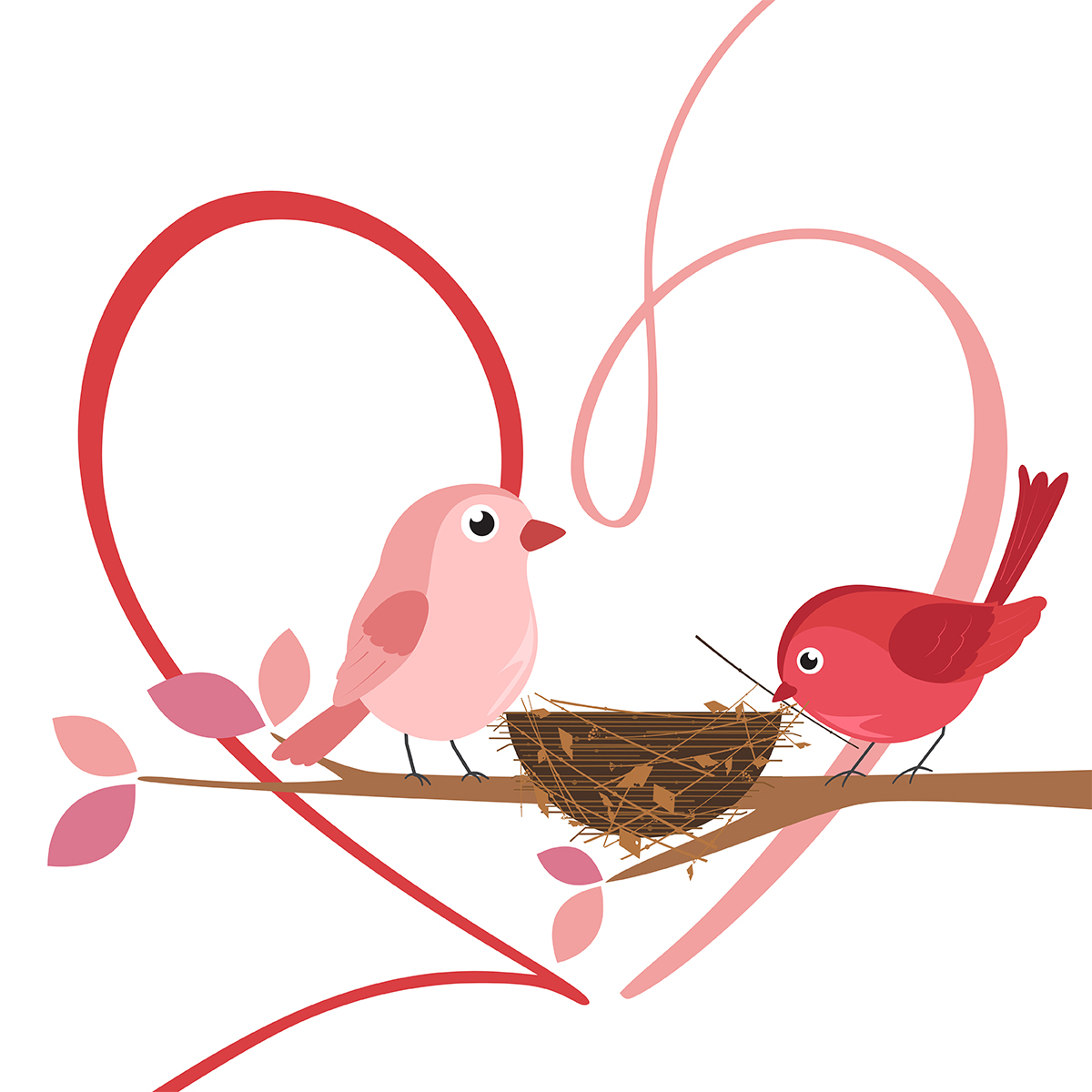14 Valentine’s Day Facts from Around the World
By City Swooner | March 5th, 2021

Argentina: Sweets for a Kiss
Rather than celebrate a single day of love, Argentina instead celebrates a Week of Sweetness from July 1st to 7th. The first tradition in this list is only 31 years old. In 1989, the Argentine confectionery company, Arcor created an advertising campaign for one of their products, “One Bon o Bon for a Kiss”. It proved to be a very popular campaign and soon took a life of its own, with Argentines embracing the idea of giving sweets, not just Arcor Bon o Bons, to their partners.
Bonus Valentine’s Day Fact:
Argentina also celebrates a more traditional Valentine’s Day on February 14th
Britain: Jack Valentine
Britain has a few odd Valentine’s Day traditions, but none are as interesting or long lasting as the Norfolk legend of Jack Valentine. Essentially the romantic equivalent of Santa Claus, Jack Valentine visits houses on February 14 to leave presents, knocking on the back door and running away before anyone can see him. Traditionally, adults were the recipients of Jack Valentine’s major gifts, with any children in the house receiving a small token gift as well, but in more recent years the emphasis has been placed more firmly on children, with Valentine’s Day essentially becoming a second Christmas when it comes to gift giving.
Bonus Valentine’s Day Fact:
An ancient tradition across England says that women who put five bay leaves on their pillow before falling asleep on February 13th will dream of their future husband.

Bulgaria: Love and Wine
Saint Tryphon of Campsada is a Christian saint venerated in the Eastern Orthodox Church as the patron saint of gardeners and winegrowers. Outside the church, Saint Tryphon holds a special place in the heart of Bulgarians. On February 14th, rather than celebrating Valentine’s Day, Bulgarians celebrate Trifon Zarezan, the Day of Winemakers.
Traditionally the day was celebrated by baking special bread, roasting a hen stuffed with rice and bulgur (cracked parboiled wheat), performing a fertility rite for crops (and perhaps childless women) that involved pouring wine on the ground, and electing a man to be “King of the Vineyard”. The “king” would then go from house to house to be served wine. If the king wasn’t too drunk by the end of the procession he would then announce a celebration for the whole town.
Nowadays the Day of Winemakers is celebrated a little more modestly, with couples going out and sharing a glass of local wine on February 14.
Bonus Valentine’s Day Fact:
Legend has it that St Tryphon accidentally cut off his own nose while pruning grape vines.
Estonia: Day of Friendship
In Estonia, rather than celebrating romantic love on February 14th, the locals instead celebrate all love, including familial love, platonic love and friendship in a celebration they call Sobrapaev, or Friendship Day . Gifts, chocolates, cards and flowers are still exchanged, but everyone can get in on the action rather than just couples.
Bonus Valentine’s Day Fact:
Sobrapaev is such a popular event that extravagant concerts, folk dances and store displays are organised for the day.
Germany: Love Pigs
In Germany, chocolates and roses aren’t the only things exchanged with partners on Valentine’s Day. While these two gifts remain popular, Germany has it’s own unique spin on the celebration, in the form of huge, heart shaped ginger biscuits and pig imagery.
The large ginger biscuits are typically frosted with a short expression of love, “Ich Liebe Dich” (I Love You) or the like and are sometimes affixed to a ribbon so they can be hung around the neck of the receiver like a giant edible necklace.
Pigs essentially take the place of cupids in German Valentine’s Day imagery and represent both lust and luck in love. Cards showing images of pigs offering flowers, gesturing provocatively or otherwise acting romantically are typical Valentine’s Day gifts, as are small pigs candies made of marzipan.

Bonus Valentine’s Day Fact:
Valentine’s Day celebrations were introduced to Germany by American soldiers stationed in the country in the 40s and 50s.
Ghana: National Chocolate Day
Rather than celebrating Valentine’s Day on February 14th, Ghana, the second largest grower of cocoa in the world, cuts out the romantic excuse and instead focuses on something everyone can love – chocolate. First initiated in 2005 by the Ministry of Tourism, Arts and Culture in collaboration with Ghana Tourism Authority and Cocoa Processing Company, Ghana Cocoa Board and other stakeholders, National Chocolate Day is an event intended to drive the consumption of chocolate and other cocoa products in order to generate more revenue for national infrastructure and development.
Bonus Valentine’s Day Fact:
Each National Chocolate Day in Ghana has a theme. For 2020 it is “My Chocolate Experience, My Holistic Wellbeing”.

Japan: Obligation Chocolates
In Japan, the giving of chocolates and flowers on Valentine’s Day is common, but not all chocolates are created equal. Traditionally, on Valentine’s Day, women give chocolates not only to the man they love, but also to people they have no romantic interest in, with the quality of chocolate given depending on how the woman feels about the recipient in question.
Honmei-choco are reserved for boyfriends. These are handmade, high quality chocolates that show love and care. Some stores not only sell delicate hand-made chocolates for Valentine’s Day, they also sell ingredients for making chocolates to women who really want to show their love.
Giri-choco are “obligation chocolates”, given to friends, colleagues and acquaintances. Although the name makes them sound like a grudging gift, Giri-choco are essentially a friendly gesture. Rather than being handmade, Giri-choco are more akin to your standard chocolate variety packs and boxes.
Cho-giri-choco or “ultra obligation chocolates” are the cheapest, nastiest chocolates available, reserved for those women are expected to give a gift to but really don’t want to.
Bonus Valentine’s Day Fact:
On March 14th, Japan celebrates White Day. On that day, men of all ages are expected to give gifts to the women in their lives, worth at least three times the amount of any gift they received on Valentine’s Day.
Philippines: Mass Weddings
In addition to giving gifts of chocolate, cards and flowers to loved ones, Valentine’s Day in the Philippines also plays host to mass weddings. February 14th has become a popular day for massed groups of couples, from dozens to hundreds, to say “I do” all at once. Mass weddings are not only a spectacle, they also serve a valuable civil service, allowing impoverished couples to marry cheaply instead of incurring the costs of venue, officiation and the like.
Bonus Valentine’s Day Fact: Since 2004, groups of Filipino couples have been gathering on Valentine’s Day in an effort to compete for the world record of number of people simultaneously kissing. The world record attempt was first proposed by the government working in conjunction with a popular Filipino toothpaste brand.
Romania: The Day When Birds are Betrothed
Some Romanians celebrate a modern Valentine’s Day on February 14th, but the country has an older and more traditional celebration of love later in the month. On February 24th, Romanians celebrate Dragobete. In Romanian mythology, Dragobete, a man renowned for his kindness was chosen (by either the Virgin Mary or another figure) to become the “Guardian of Love”. Dragobete is sometimes known as “the day when birds are betrothed” as it is celebrated around the time when birds start to build nests and mate. Modern Dragobete celebrations are much like Valentine’s Day celebrations.

Bonus Valentine’s Day Fact:
One old Dragobete tradition saw young women gathering the last of the Winter snow on February 24th and bringing it back to their homes to allow it to melt. The resulting water was then used in the creation of potions.

Slovenia: Light Thrown Into the Water
Modern Slovenians celebrate Valentine’s Day on February 14th, but on March 12th they also celebrate Gregorjevo, or St. Gregory’s Day. St. Gregory brings light and heralds spring, making his day one that heralds new growth, both in the fields and in relationships.
On the night before Gregorjevo, people launch gregorcki – little boats or floating offerings that are set on fire – into rivers and streams to wash away bad work and welcome in the light.
Bonus Valentine’s Day Fact:
Another Gregorjevo tradition states that the first bird a young woman sees on St. Gregory’s Day will tell her what her future husband will be like.
South Africa: Wear Your Heart on Your Sleeve
Valentine’s Day is widely celebrated in South Africa, with shops, restaurants and venues preparing exhibitions, displays and special menus weeks in advance to cater to the love crazed populace. In addition to exchanging chocolates and flowers, young South Africans will often pin the name of their beloved to their sleeve, letting the world, and sometimes their secret crush, know who they love. Although South Africans call this practise Lupercalia, in honour of the ancient Roman fertility rite, it has little to do with the actual Roman celebration in which two male goats and a dog were sacrificed and the attendees were anointed with their blood.
Bonus Valentine’s Day Fact:
The phrase, “to wear your heart on your sleeve” was first recorded in William Shakespeare’s Othello, and refers to the Middle Ages practise of knights pinning the handkerchief or a lady to their shoulders to proclaim their loyalty and love during tournaments.
South Korea: Chocolate and Black Noodles
The celebration of Valentine’s Day may be indicative of the influence Western culture has had on the younger generation, but South Korea has its own novel spin on the celebration of love. On February 14, Women give chocolates, flowers and cards to their love, a gesture that is reciprocated a month later by men on White Day, celebrated on March 14.
Those not so lucky in love get their own day of celebration on April 14. On Black Day (not the most uplifting of names for a celebration), single people get together and share their misery, symbolically eating jajangmyeon noodles, a dish with a thick black sauce.

Bonus Valentine’s Day Fact:
May 14th is Rose Day in South Korea and people celebrate by giving roses to each other. Single South Koreans mark the day by eating yellow curry.
Taiwan: 108 Roses
The people of Taiwan celebrate love three times a year, with a Western style Valentine’s Day on February 14th, White Day (like Japan and South Korea) on March 14th and finally a traditional holiday rooted in Chinese mythology on the 7th of July. 7/7 Day commemorates the annual meeting of weaving maid and a cowherd on a bridge of magpies. It is said to rain every year on 7/7 because the celestial couple are crying over their reunion.
Flowers, especially roses are common Valentines, White Day and 7/7 gifts, but there is a special language of flowers that must be followed. A single red rose indicates an only love. 11 roses mean the recipient is their favourite. 99 roses mean pledge eternal love and 108 are a proposal of marriage.
Bonus Valentine’s Day Fact:
7/7 Day is also known as the Qixi festival and is celebrated throughout China on the 7th day of the 7th lunar month, so August 25th by the Gregorian Calendar.
Wales: Spoonful of Love
Your beloved handing you a large wooden spoon on Valentine’s Day doesn’t sound like the most romantic of gestures, but Wales has a long tradition of giving Lovespoons to significant others. These large spoons are carved and decorated with symbols of love and devotion, such as hearts to denote love, horseshoes for luck, crosses for faith and fidelity and bells for marriage. More difficult carvings, like articulated chains and caged balls symbolised the bongs of love and a wish for children, respectively, but were also used to show that the carver was capable of supporting a family through woodworking skill.
Bonus Valentine’s Day Fact:
An old Norwegian wedding tradition saw the newlyweds eating with linked carved lovespoons to symbolise the bonds of marriage.